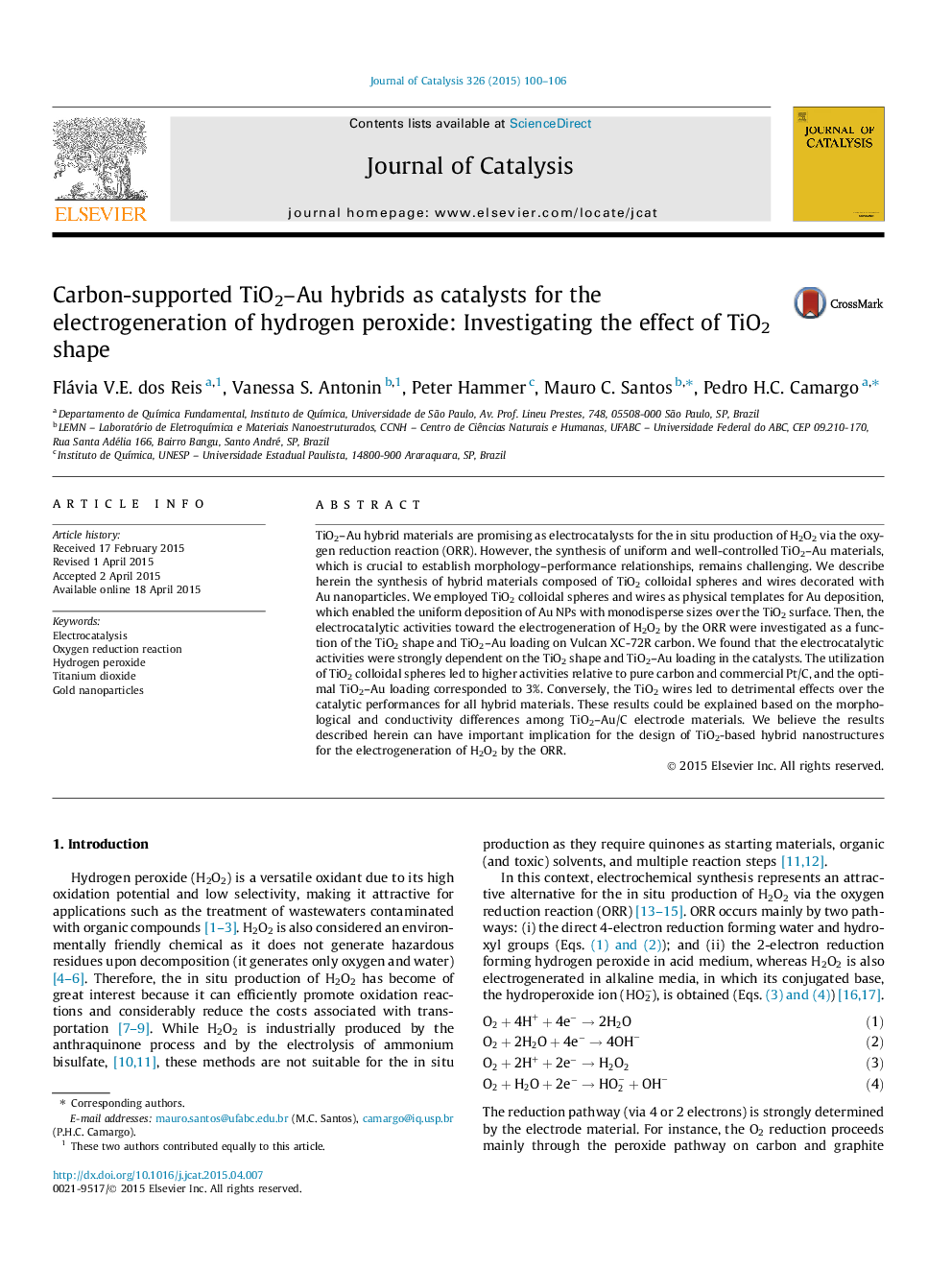| کد مقاله | کد نشریه | سال انتشار | مقاله انگلیسی | نسخه تمام متن |
|---|---|---|---|---|
| 60855 | 47549 | 2015 | 7 صفحه PDF | دانلود رایگان |

• TiO2–Au hybrids composed of TiO2 colloidal spheres or wires were prepared.
• Activities toward the electrogeneration of H2O2 by the ORR were investigated.
• Performance was dependent on the TiO2 shape and loading on Vulcan XC-72R carbon.
• TiO2 colloidal spheres led to higher activities relative to carbon and Pt/C.
• Optimal TiO2–Au loading corresponded to 3% in weight.
TiO2–Au hybrid materials are promising as electrocatalysts for the in situ production of H2O2 via the oxygen reduction reaction (ORR). However, the synthesis of uniform and well-controlled TiO2–Au materials, which is crucial to establish morphology–performance relationships, remains challenging. We describe herein the synthesis of hybrid materials composed of TiO2 colloidal spheres and wires decorated with Au nanoparticles. We employed TiO2 colloidal spheres and wires as physical templates for Au deposition, which enabled the uniform deposition of Au NPs with monodisperse sizes over the TiO2 surface. Then, the electrocatalytic activities toward the electrogeneration of H2O2 by the ORR were investigated as a function of the TiO2 shape and TiO2–Au loading on Vulcan XC-72R carbon. We found that the electrocatalytic activities were strongly dependent on the TiO2 shape and TiO2–Au loading in the catalysts. The utilization of TiO2 colloidal spheres led to higher activities relative to pure carbon and commercial Pt/C, and the optimal TiO2–Au loading corresponded to 3%. Conversely, the TiO2 wires led to detrimental effects over the catalytic performances for all hybrid materials. These results could be explained based on the morphological and conductivity differences among TiO2–Au/C electrode materials. We believe the results described herein can have important implication for the design of TiO2-based hybrid nanostructures for the electrogeneration of H2O2 by the ORR.
Figure optionsDownload high-quality image (203 K)Download as PowerPoint slide
Journal: Journal of Catalysis - Volume 326, June 2015, Pages 100–106